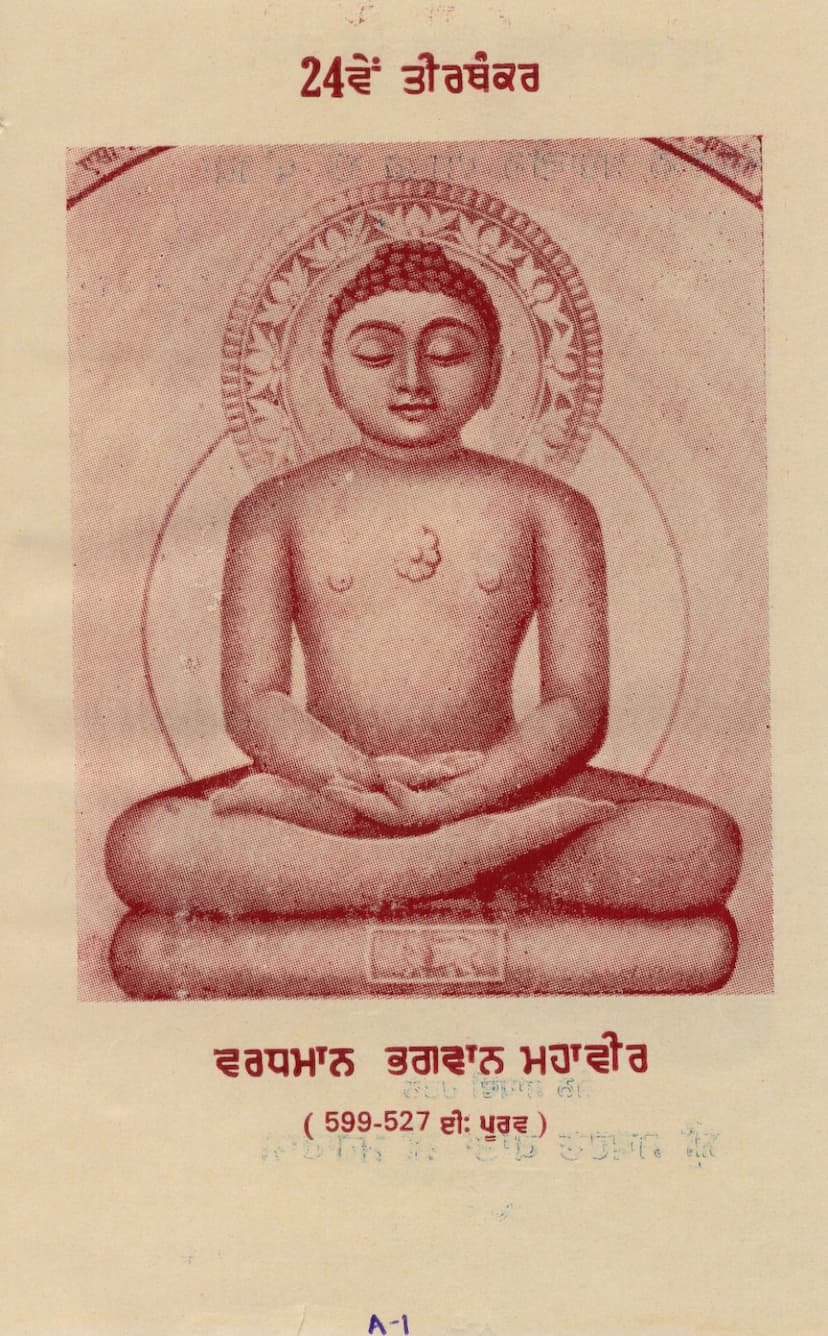Puratan Punjabi Vich Jain Dharm
Added to library: September 2, 2025

Summary
This book, "Puratan Punjabi vich Jain Dharm" (Jainism in Ancient Punjab), authored by Purushottam Jain and Ravindra Jain, and published by Purshottam Jain and Ravindra Jain, is a comprehensive historical exploration of the presence and influence of Jainism in the region of Punjab. The book is dedicated to Sadhvi Ratna Shri Swarn Kanta Ji Maharaj, acknowledging her inspirational role and her lineage from Sadhvi Shri Parvati Ji Maharaj.
The work is structured into four main sections, covering distinct historical periods:
- The Tirthankara Era: This section likely delves into the era of the Tirthankaras, exploring their connection to the Punjab region.
- From Lord Mahavir to Raja Kumarpal Solanki: This period highlights the development and spread of Jainism after Lord Mahavir, tracing its influence through significant historical figures like Raja Kumarpal Solanki.
- The Status of Jainism during the Mughal Period: This part examines the condition and activities of the Jain community and their religious practices during the rule of the Mughal emperors.
- Jainism from the Sikh Empire to the Present Day: This final section covers the social movements and transformations within Jainism from the era of the Sikh Empire up to contemporary times.
The authors have drawn upon a wide array of historical sources to compile this work, including:
- Vedic and Puranic texts: Indicating a deep dive into ancient Indian literature.
- Historical texts: Such as Rajatarangini, which provides historical narratives.
- Jain Sutras: Referencing the teachings and travels of Jain scholars, Ganadharas, and Acharyas, who meticulously documented regional customs, social structures, and cultural practices.
- Inscriptions, copper plates (Kurinama), memoirs, travelogues, and ancient monuments: These provide tangible evidence and scientific documentation for reconstructing the historical landscape of ancient Punjab.
The book emphasizes the profound impact of Jainism on the socio-cultural fabric of Punjab:
- Promoting Ahimsa (Non-violence): Jainism's emphasis on Ahimsa is highlighted as a significant factor in shaping the ethical landscape.
- Advocating Vegetarianism: The text points out that Vedic and Vaishnav followers in ancient Punjab, particularly Brahmins, were predominantly pure vegetarians due to the influence of Jainism. This contrasts with other parts of India where Brahmins were less strictly vegetarian. This vegetarianism is presented as a direct outcome of Jainism's humane propagation.
- Countering Violent Religious Practices: Ancient Jain kings are credited with promoting social reform and religious propagation, protecting the populace from the violent tendencies of Shaivite and Shakt communities. Practices like animal sacrifice and human sacrifice, which were detrimental to human well-being, were kept at bay from Punjab due to Jainism's influence.
The text also provides specific connections between prominent Tirthankaras and the region:
- Tirthankaras Shantinath, Kambunath, and Arhanath: These three Tirthankaras are identified as originating from Hastinapur, the capital of Kuru Desh, and were rulers from that region.
- Bahubali: The youngest son of the first Tirthankara, Rishabhdev, is believed to be the founder of Bahawalpur. His capital was in Takshashila (modern Taxila) in Gandhara Desh (western Punjab).
- Parshvanath: The 23rd Tirthankara, Parshvanath, extensively toured Kashmir, Gandhara, and Puru Desh (capital of King Porus) during his religious propagation.
- Lord Mahavir: The 24th and final Tirthankara, Lord Mahavir, is mentioned to have visited Punjab on multiple occasions. The authors cite ancient Jain texts like Bhagavati Vipak Sutra and Avashyak Churni for references to his travels in cities like Hastinapur, Rohtak, Thanesar, Moga, and Sialkot (then known as Shivika, the capital of Ardh-Kaikye Desh in western Punjab). His stay in Vit-Bhai Patan (Bhera), the capital of Sindhu and Savir Desh, at the request of King Udayana, is also detailed from the Bhagavati Sutra.
The book also details the interactions of Jain scholars and ascetics with Mughal emperors and other rulers, highlighting their relationships from a historical perspective. It notes the limited but significant connection of the Digambar sect of Jainism to Punjab, particularly their presence up to Haryana, with important centers in Multan and Delhi. These scholars and Bhattaraks played a crucial role in preserving Jainism during difficult times and contributed significantly to Jain literature in Sanskrit, Prakrit, and vernacular languages. Notable works like Megh Vinod and Megh Vilas by Megh Muni of Phagwara are mentioned for their contributions to medical knowledge.
The book also provides information on modern Jain monks and scholars in a simple and accessible Punjabi. It includes dates in both the Gregorian and Bikram eras, emphasizing the understanding of the Bikram Samvat where dates are provided without the Gregorian calendar equivalent.
The introduction by Shamsher Singh Ashok, a Sikh scholar, praises the book as a unique and valuable contribution to Punjabi literature, shedding light on the early connections between Jainism and Punjab. He highlights the book's meticulous research, use of diverse sources, and its clear, artistic structure, making it an important read for Punjabi readers.
The authors express their gratitude to various individuals and institutions for their support in compiling this work, including the Archaeological Department of Punjab, Haryana, Himachal, and Delhi for providing photographs of artifacts. They also acknowledge the contributions of other scholars and publishers whose works were instrumental in the research. The book also mentions the missing comprehensive coverage of the Digambar tradition due to the scarcity of material.
The concluding remarks highlight the book's objective to present a historical overview of Jainism in Punjab, compiling information from various sources, and acknowledging that it is not an exhaustive history but a valuable starting point for further research. The authors also express their deep respect and dedication to Sadhvi Shri Swarn Kanta Ji Maharaj, who is presented as their spiritual guide and inspiration for undertaking this significant literary endeavor. The book aims to bridge a gap in Punjabi literature regarding the history of Jainism in the region.